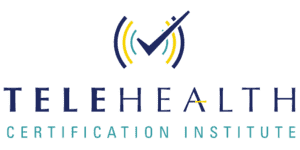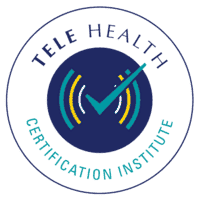When Raymond Barrett first created a telehealth training certificate program in 2014, he believed it was essential to include the ethical and legal standards for social workers, and these standards continue to shape the content of the Telemental Health Training Certificate (THTC) Program today. Some examples are the NASW Code of Ethics, state and federal laws, and best practices for technology-assisted social work. In addition to these, the THTC Program meets CSWE’s educational and policy accreditation standards.
The fact that the THTC program meets CSWE’s standards is what has made the THTC a top choice for universities that prioritize teaching telehealth to their social work students. See how we do this below:
The fact that the THTC program meets these CSWE standards is important. It is what has made the THTC a top choice for universities that prioritize teaching telehealth to their MSW and DSW students. Below, we list the competencies stated in CSWE’s standards and share how the THTC lives up to these standards.
Feel free to check out the full description of the latest version of the THTC Program and also how we make it easily accessible to graduate programs.
Competency 1: Demonstrate Ethical and Professional Behavior
- Make ethical decisions by applying the standards of the National Association of Social Workers Code of Ethics, relevant laws and regulations, models for ethical decision-making, ethical conduct of research, and additional codes of ethics within the profession as appropriate to the context.
- The TeleMental Health Training Certificate Program (THTC) covers the application of NASW’s Code of Ethics regarding the use of technology and provides in-depth knowledge of the legal implications of using technology for social work practice.
- Demonstrate professional behavior, appearance, and oral, written, and electronic communication.
- THTC explains the potential benefits and drawbacks of electronic communication and the clinical skills of communicating via telecommunication technology.
- Manage personal and professional value conflicts and affective reactions.
- THTC addresses the impact of bias concerning the use of technology, treatment planning, communication methods, and emergency management planning.
- Use technology ethically and appropriately to facilitate practice outcomes.
- THTC explains the ethical use of technology (records, telecommunication, apps, VR, remote monitoring, and portals) and the impact of technology on healthcare services.
- Use supervision and consultation to guide professional judgment and behavior.
- THTC identifies occasions when a clinician should seek supervision or consultation regarding the selection and use of technology.
Competency 2: Advance Human Rights and Social, Racial, Economic, and Environmental Justice
- Advocate for human rights at the individual and system levels.
- THTC explains disparities in the access to and utilization of telehealth services, as well as the efforts that can be made to improve equity.
- Engage in practices that advance human rights to promote social, racial, economic, and environmental justice.
- THTC explains how the ethical design, selection, configuration, and implementation of technology can assist with healthcare equity.
Competency 3: Engage Anti-racism, Diversity, Equity, and Inclusion in Practice
- …and they recognize the extent to which a culture’s structures and values, including social, economic, political, racial, technological, and cultural exclusions, may create privilege and power and systemically oppress, marginalize, and alienate.
- THTC provides an ethical framework for designing technology that is culturally informed; explains the disparities in the utilization of and access to telehealth services; and considers improvements to healthcare equity.
- Demonstrate cultural humility by applying critical reflection, self-awareness, and self-regulation to manage the influence of bias, power, privilege, and values in working with clients and constituencies, acknowledging them as experts of their own lived experiences.
- THTC explains the impact of cultural competence and humility on client treatment. Tools for developing awareness of one’s own bias, power, privilege, and knowledge of cultural differences are provided.
Competency 4: Engage Practice-informed Research and Research-informed Practice
- Apply research findings to inform and improve practice, policy, and programs.
- THTC explains current research on using of technology in healthcare environments and implications for practice.
- Identify ethical, culturally informed, anti-racist, and anti-oppressive strategies that address inherent biases for use in quantitative and qualitative research methods to advance the purposes of social work.
- THTC explains the need to investigate populations who are served by therapeutic theories, methods, assessments, and techniques to develop possible adaptations for specific populations.
Competency 5: Engage in Policy Practice
- Use social justice, anti-racist, and anti-oppressive lenses to assess how social welfare policies affect the delivery of and access to social services:
- THTC identifies how telehealth service restrictions via insurance reimbursement, organizational policies, and state licensure laws can create disparities in the provision of behavioral health services. THTC also identifies efforts to mitigate these negative impacts through interstate licensure compacts.
Competency 6: Engage with Individuals, Families, Groups, Organizations, and Communities
- Apply knowledge of human behavior and person-in-environment, as well as interprofessional conceptual frameworks to engage with clients and constituencies; and
- THTC emphasizes the importance of environmental and cultural client factors while providing ways for clinicians to develop awareness.
Competency 7: Assess Individuals, Families, Groups, Organizations, and Communities
- Apply knowledge of human behavior and person-in-environment and other culturally responsive interprofessional theoretical frameworks when assessing clients and constituencies
- Demonstrate respect for client self-determination during the assessment process by collaborating with clients and constituencies in developing mutually agreed-on goals.
- THTC explains aspects of the clients' Explanatory Model, its impact on treatment, and how the clinician's bias can affect treatment outcomes.
Competency 8: Intervene with Individuals, Families, Groups, Organizations, and Communities
- Engage with clients and constituencies to critically choose and implement culturally responsive, evidenced-informed interventions to achieve mutually agreed-on plans and increase the capacities of clients and constituencies.
- THTC explains how technology can be used for data collection to understand clients' needs and preferences. THTC also states how services can be designed in a culturally responsive manner.
Competency 9: Evaluate Practice with Individuals, Families, Groups, Organizations, and Communities
- Select and use culturally responsive methods for evaluation of outcomes.
- Critically analyze outcomes and apply evaluation findings to improve practice effectiveness with individuals, families, groups, organizations, and communities.
- THTC explains how and what data (metrics) can be acquired and analyzed via the use of technology, and how organizations can use data to improve their outcomes.




The course was so informative and I was glued to my screen for the entire duration. I received so much knowledge concerning ethics in telehealth and I am greatly encouraged to read about all the standards and policies that pertain to my practice. Thank you!.